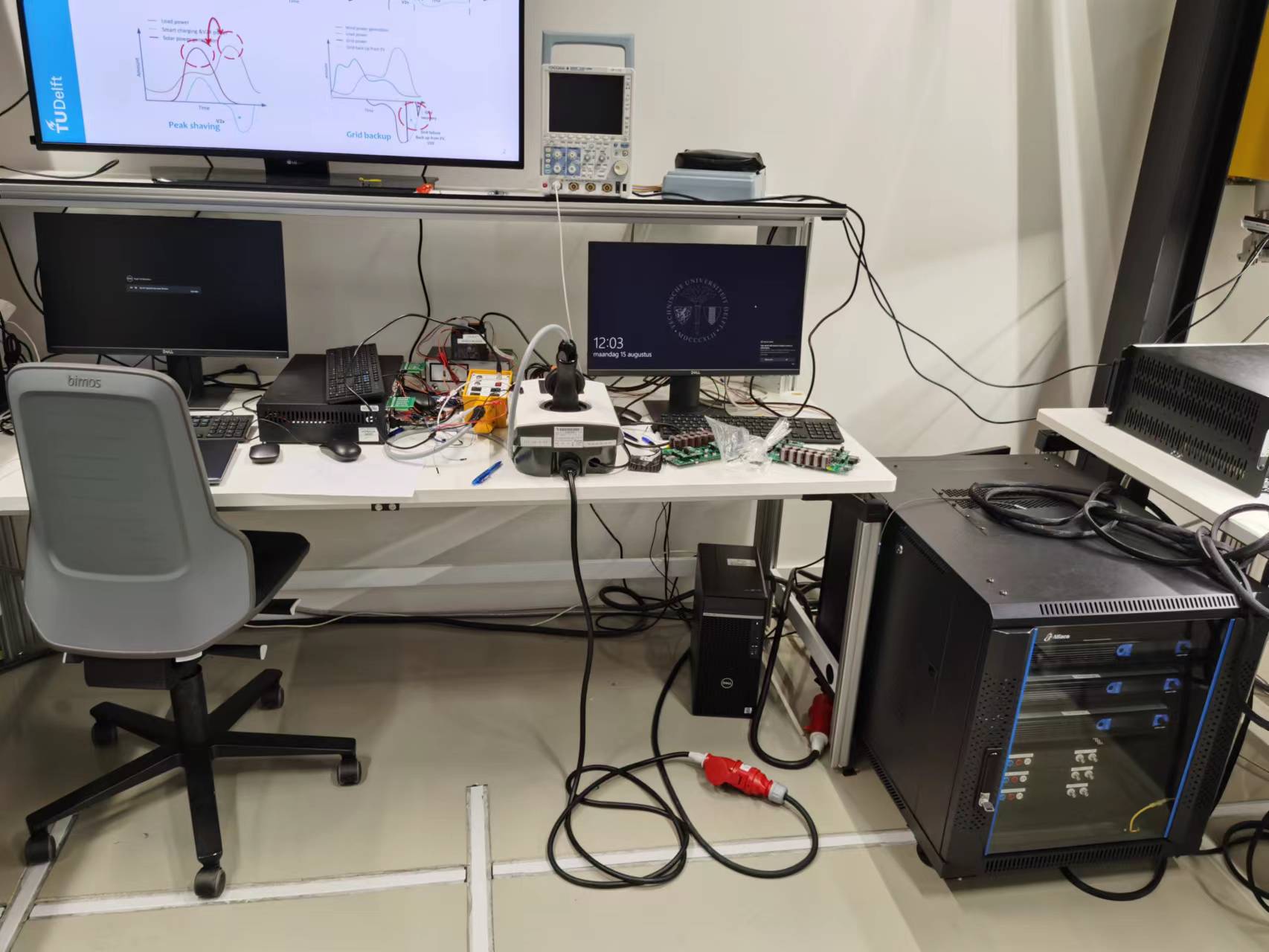Hardware-in-the-Loop Simulation of EV Smart Charging in a Distribution Grid
30 August 2022 14:30 till 31 August 2022 14:50 - Location: Tennetroom HH01.230 - By: DCE&S | Add to my calendar
MSc thesis of Junsheng Zhang
With the development of sustainable energy technology and the increasing emphasis on environmental protection, the popularity of electric vehicles is increasing. However, As the number of electric vehicles increases, so does the pressure on the grid due to charging. If a large number of electric vehicles are charged at the same time, the grid will inevitably be overloaded. For this problem, smart charging can be a good solution. The smart charging algorithm determines when it is optimal to charge the electric vehicles(EVs) based on factors like Photovoltaic(PV) generation, local load consumption, and energy price. For customers, this means the total cost of charging is the lowest, for the power system it means charging when the network is not overloaded. Furthermore, Smart charging can reduce the need for grid infrastructure investments and reduce energy costs. From an energy-friendly and economical perspective, this is worth doing.
Up to now, there is a large amount of literature study about smart charging. However, most of the literature is based on pure software analysis rather than hardware experiments. In this thesis, a hardware-in-the-loop-based simulation is presented. The basic idea of hardware-in-the-loop simulation is to include a part of the real hardware in the simulation loop. The advantages of hardware-in-the-loop simulation are obvious. Compared with pure software simulation, hardware-in-the-loop(HIL) simulation has the real response of the hardware components, and it is not very complicated to set everything up. In this thesis, the testing and the evaluation of the system are carried out in real-time because the HIL setup includes an OPAL-RT OP4510 DRTS. The simulation of the distribution grid is running on the OPAL target by the software ePHASORsim. The rest part of the testbed consists of a Programmable Logic Controller (PLC) and two bidirectional Direct Current(DC) power supplies to form an Alternating Current(AC) source and an Alfen charger. The smart charging algorithm is written in Python code. By calling Gurobi, smart charging algorithms can calculate and decide the optimal current setpoints for each EV connected to the distribution grid in real-time.
